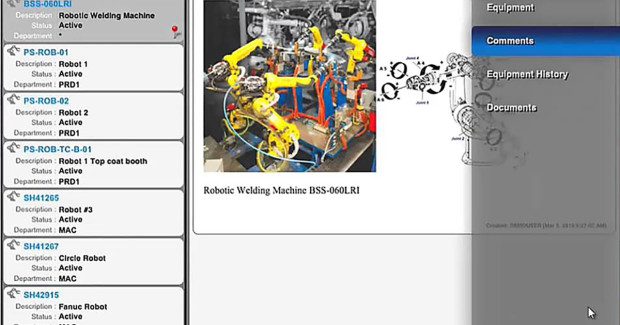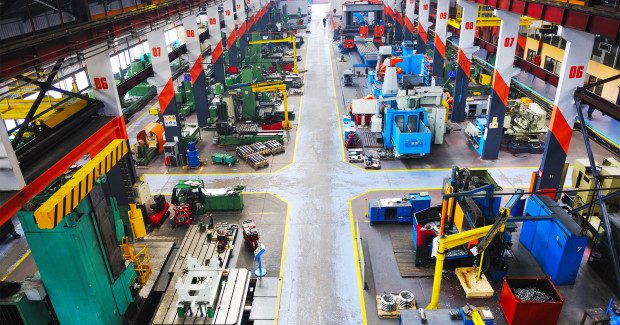The Modern Day Crystal Ball
Predicting maintenance requirements is one of the most important benefits of advanced analytics. In the face of a hyper-competitive global economy, the smart use of predictive analytics may be the differentiating factor that sets one fabricator apart from the countless others.
Posted: May 4, 2015
The ability to foresee the future would have many benefits. In the world of fabricating and metal working, the ability to predict equipment incidents on the shop floor would mean significant savings — in both lost revenue and lost customers. Unexpected equipment downtime can be disastrous, forcing shop floor managers to reschedule projects, face costly delays, miss critical deadlines and risk valuable customer relationships.
Rushed repairs on equipment that goes down in the middle of an important job can also mean extra charges for repairs and premium charges for replacement parts. The service technician may also be forced to cut corners, shortening the preferred methodology in order to get the equipment back on line as quickly as possible. This can have long term risks to the equipment’s longevity.
Each piece of equipment in your manufacturing and fabricating process has a definable lifecycle. You know that no machine can operate indefinitely without ongoing preventive maintenance and an occasional repair. Some machines may even have routine preventive maintenance that must be done on a set schedule, such as changing filters, replacing belts, inspecting safety systems or recalibrating gauges. Failing to comply with the recommendations of the equipment manufacturer could result in loss of the warranty or upgrade rights.
These routine preventive maintenance tasks which are supposed to happen at regular intervals can be scheduled so that maintenance creates the least amount of disruption. Weekends, second shifts or seasonal dips in customer orders make good times to schedule maintenance tasks, large or small. When these activities are planned and announced well in advance, team members can work around any possible changes to workflows that may be needed, letting customers know to expect delays or offering alternative options. Sales teams appreciate fair warning so they schedule customer orders before maintenance or appropriately manage customer expectations.
The ability to plan for maintenance eliminates much of the inconvenience and costs associated with equipment downtime. Wouldn’t it be nice to have the same ability to plan around break-fix repairs and predict exactly when a belt will break, a blade will snap, a pipe will rupture, a sensor will overheat, or a conveyer will freeze in place?
Modern analytics and advanced enterprise resource planning (ERP) systems provide this kind of ability to predict the future. Machines have telltale indicators that can signal when a failure or incident is likely. These indicators are much like a sneeze of sniffles indicate that a cold is coming is on. The challenge is to identify which indicator is the appropriate one to monitor. Choosing an indicator that occurs immediately before failure will not give the team enough time to plan intervention and reroute job orders. The indicator needs to be an early warning sign, one that gives teams adequate time to schedule a technician to take appropriate preventive actions, such as replacing worn parts or adjusting misalignment. With enough notice, customer orders can be routed to other machines and other compensations can be made.
Performance data can be collected directly from the machines, or from other key performance indicators (KPIs). Smart sensors in the equipment can measure temperature, speed, volume and numerous other potential triggers. Internet of Things (IoT) technology allows data from the machine to be gathered and analyzed by the ERP system.
Advanced analytics also help manufacturers and fabricators to recognize when the machinery is performing below quality standards and causing declines in throughput, longer cycle times, more rework, or more cases of failure to meet specifications. Dips in performance can be spotted early so that damage is contained without risking brand or customer contracts. Such performance issues can be so subtle that a manager may miss the variations and not notice the decline until it becomes severe with high impact and negative consequences. Modern analytics help users detect troublesome abnormalities and project the consequences of prolonged use of machines operating below expectations.
Projecting the impact of trends over an extended period of time helps managers evaluate risk. Analytics integrated with modern ERP solutions help manufacturers predict needs and derive meaningful insight from trends — past and future. Managers can go past the surface-level numbers and delve into the driving forces a step — or even two or three steps — deeper. These reasons behind the numbers allow managers to make judgments and decisions based on many influencing, subjective factors.
Predicting maintenance requirements is one of the most important benefits of advanced analytics. This ability to project likely failures gives managers the chance to have replacement parts available or to budget for necessary replacements or upgrades. Understanding the lifecycle of each piece of equipment helps to manage the financial investment required to keep the total operation synchronized and operating as efficiently as possible. This data about machine performance will also be useful for planning growth and determining the budget impact of placing extra strain on machines. This helps managers truly understand the impact machine performance has on capacity and profitability.
In the face of today’s competitive global economy, such insights may just be the differentiating factor that sets one fabricator apart from the countless others. Smart use of analytics pays off.














